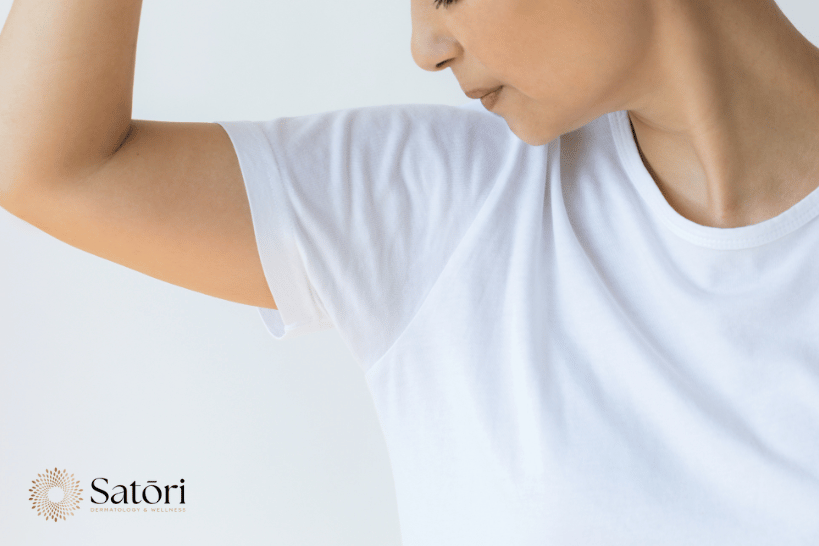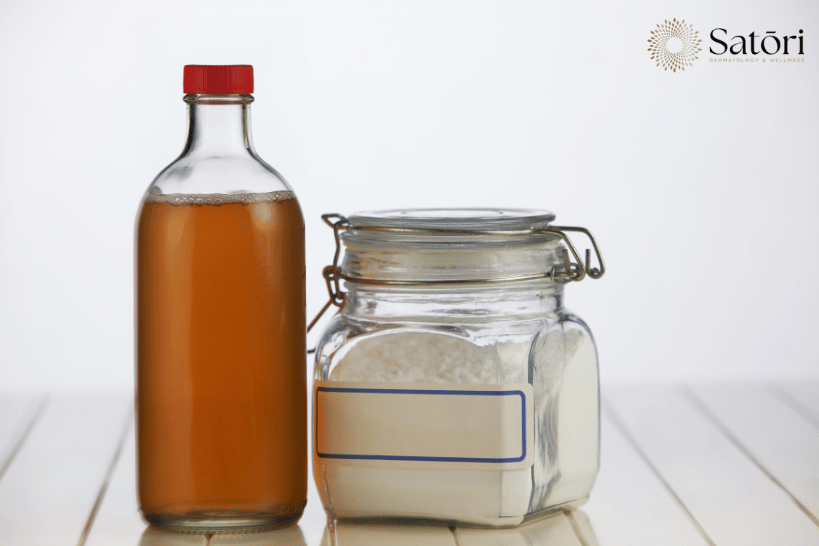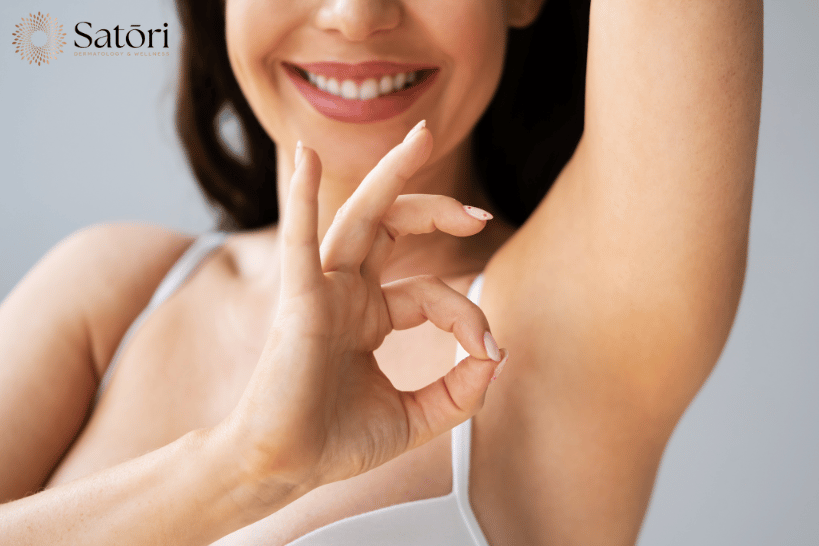Sweating helps regulate body temperature. But when it becomes excessive, especially in the underarms, it can interfere with daily life. For some, it’s a response to stress or heat. For others, it’s linked to a medical condition.
If you’re searching for natural ways to stop underarm sweating, it helps to understand why it happens and what steps may offer relief. This guide outlines practical methods to help manage symptoms using everyday choices and simple remedies.

Understanding Underarm Sweating
Sweat glands are small structures that release moisture through the skin. Their primary role is to cool the body. When body temperature rises, the nervous system signals sweat glands to release sweat. This is a normal and necessary function.
For some people, this cycle works as expected. For others, the glands are overactive. This is particularly common in the underarms. Excessive underarm sweating is often unpredictable. It may occur even when the body is at rest or the air is cool.
Excessive sweating in the absence of heat or activity may be caused by a medical condition called primary hyperhidrosis. Secondary hyperhidrosis is less common and is linked to medications or other diseases. Understanding the root of your symptoms can guide the approach you take, including whether natural methods will be effective.
Daily Habits That Help
Simple habits can reduce triggers and limit the effects of underarm sweating. These changes are often easy to introduce and may offer consistent results when applied over time.
Stay Hydrated
Your body’s water content plays a role in how it controls heat. Staying hydrated helps stabilize your internal temperature and could lower the demand placed on sweat glands. Make water your primary beverage throughout the day.
Focus on Your Diet
Some foods stimulate the nervous system. Spicy dishes and caffeine are two of the most common triggers for increased sweating. Reducing or eliminating these from your meals may decrease how often your body initiates a sweat response.
Certain processed foods can affect fluid balance as well. Watching your sodium intake may also help maintain an even body temperature and minimize sweating.
Wear Natural Fabrics
The type of clothing you wear matters. Natural fibers like cotton and linen allow air to circulate. They draw moisture away from the skin, reducing odor and discomfort. Avoid synthetic materials that trap heat and raise the risk of excessive underarm sweating.
Maintain Clean Skin
Showering daily helps control bacteria and remove sweat residue. Make sure to dry your underarms completely before dressing. This simple step can limit irritation and reduce odor throughout the day.
Reduce Stressors
Even short-term stress can activate the nervous system and signal the body to sweat. Managing how you handle these moments is important. A calm morning routine, walking, or structured breathing may decrease sudden sweat responses.

Natural Topical Approaches
Some people respond well to natural topical treatments. These may reduce wetness or odor, although results can vary depending on sweat gland activity and skin type.
Witch Hazel and Apple Cider Vinegar
Witch hazel is known for its astringent properties. When applied to the underarms, it may tighten the skin slightly and reduce surface moisture. Apple cider vinegar can work similarly, although it may irritate sensitive skin if not diluted.
Apply either solution at night using a cotton ball, then rinse in the morning. Over time, some people notice reduced dampness in the area.
Baking Soda
Baking soda absorbs odor and moisture. You can apply a thin layer directly to clean, dry underarms. Keep in mind that long-term use can lead to dryness or irritation. Test on a small patch of skin before regular use.
Avoiding Ingredients Like Aluminum Chloride
Many antiperspirants rely on aluminum chloride to block sweat glands. While effective, this ingredient is often excluded from natural products. If you prefer aluminum-free options, be aware that these may control odor but won’t stop sweating entirely. Their usefulness depends on your level of sweat production and skin sensitivity.
Lifestyle Management Strategies
Long-term control of underarm sweating includes managing the systems that regulate it.
Manage Your Stress Response
The nervous system controls your reaction to pressure, anxiety, or panic. These moments can activate sweat glands, even if the body isn’t hot.
Simple routines that lower the intensity of these reactions may help. Breathing exercises, short walks outside, or regular yoga practice can tone down the stress signal before it leads to a physical response.
Maintain Consistent Sleep
Rest supports all systems of the body, including temperature regulation. Poor or broken sleep may leave the body in a heightened state that increases sweat output. Aim for a consistent bedtime and limit screen use before sleeping to improve quality.
Stay Physically Active
Regular movement improves circulation and reduces overall stress. It also helps manage body weight, which may influence how often you sweat. Fat tissue retains heat more than muscle, so reducing body fat can lead to a lower resting body temperature. You don’t need intense workouts—steady, moderate activity works well.

When to Seek Medical Advice
While natural options may help reduce sweating for some, they are not a cure. If your symptoms interfere with work, social activity, or daily comfort, consider speaking with a dermatologist.
Excessive sweating may signal a medical condition like hyperhidrosis. A specialist can perform a physical exam, ask about patterns and triggers, and rule out related conditions.
Prescription-strength antiperspirants containing aluminum chloride are often the first clinical step. Botox injections to deactivate sweat glands or oral medications may follow.
In rare cases, when symptoms do not improve and involve multiple areas of the body, a surgical procedure called thoracic sympathectomy is an option. This approach cuts certain nerves in the chest to interrupt the sweat signal. It’s used only in severe cases after other treatments have failed.
Managing Sweat Naturally
Underarm sweating keeps the body cool, but excessive underarm sweating can interrupt daily life. Natural approaches—like staying hydrated, adjusting your diet, managing stress, and applying topical options—can help some people manage symptoms.
These strategies may not work overnight but can make a real difference when used consistently. If sweating continues to affect your life despite these efforts, medical treatment is available. A dermatologist can offer new options to find the relief you need.
Sweating is part of being human. But how you manage it is within your control.

